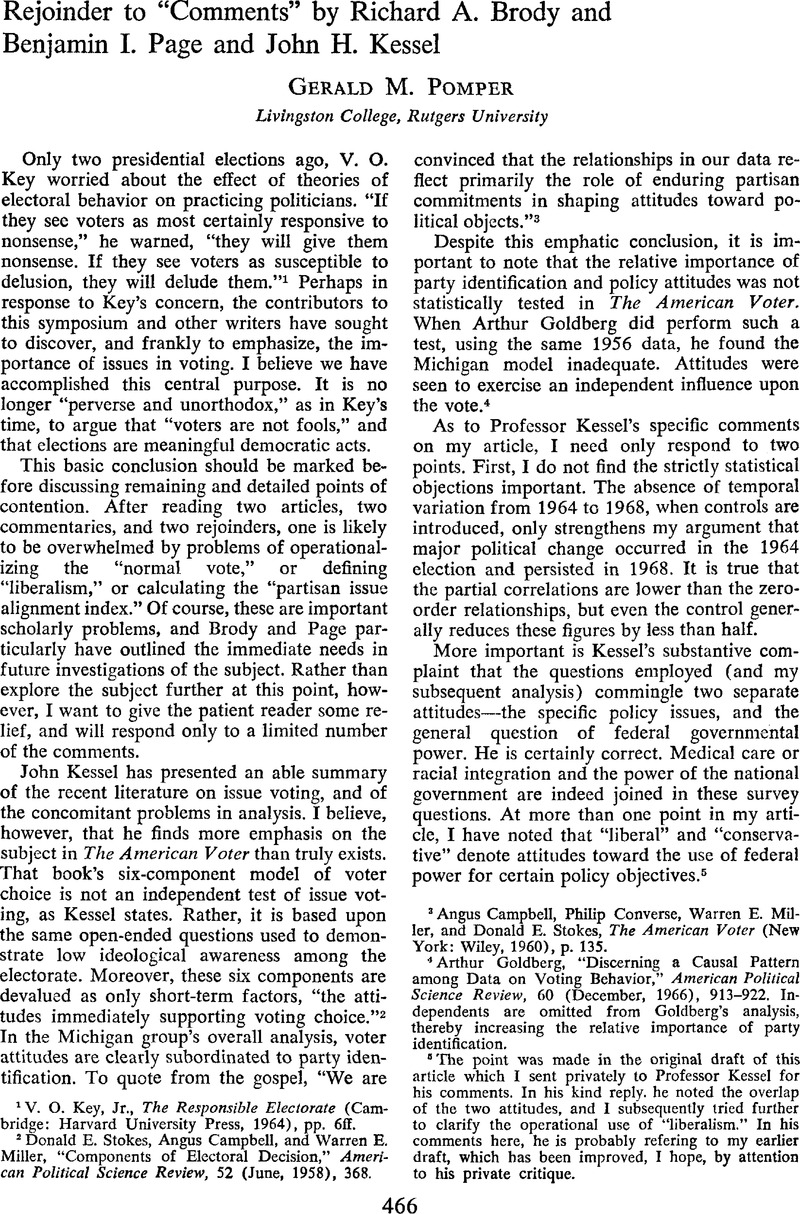Article contents
Rejoinder to “Comments” by Richard A. Brody and Benjamin I. Page and John H. Kessel
Published online by Cambridge University Press: 01 August 2014
Abstract

- Type
- Articles
- Information
- Copyright
- Copyright © American Political Science Association 1972
References
1 Key, V. O. Jr., The Responsible Electorate (Cambridge: Harvard University Press, 1964), pp. 6ffGoogle Scholar.
2 Stokes, Donald E., Campbell, Angus, and Miller, Warren E., “Components of Electoral Decision,” American Political Science Review, 52 (06, 1958), 368 CrossRefGoogle Scholar.
3 Campbell, Angus, Converse, Philip, Miller, Warren E., and Stokes, Donald E., The American Voter (New York: Wiley, 1960), p. 135 Google Scholar.
4 Goldberg, Arthur, “Discerning a Causal Pattern among Data on Voting Behavior,” American Political Science Review, 60 (12, 1966), 913–922 CrossRefGoogle Scholar. Independents are omitted from Goldberg's analysis, thereby increasing the relative importance of party identification.
5 The point was made in the original draft of this article which I sent privately to Professor Kessel for his comments. In his kind reply, he noted the overlap of the two attitudes, and I subsequently tried further to clarify the operational use of “liberalism.” In his comments here, he is probably refering to my earlier draft, which has been improved, I hope, by attention to his private critique.
6 See Converse, Philip E., “The Nature of Belief Systems in Mass Publics,” in Ideology and Discontent, ed., Apter, David E. (London: The Free Press, 1964), pp. 219–223 Google Scholar, A quick analysis of some other 1968 data indicated that over two-thirds of the sample could determine the relative conservatism or liberalism of the two major parties, and that 87 per cent agreed that the Democrats were the more liberal party (including 94 per cent of the strong Republicans). See deck 12, column 49 of the 1968 survey.
7 See Pomper, Gerald, Elections in America (New York: Dodd, Mead, 1968), pp. 119–122 Google Scholar and Devine, Donald J., The Attentive Public (Chicago: Rand McNally, 1970), pp. 95–99 Google Scholar.
- 4
- Cited by




